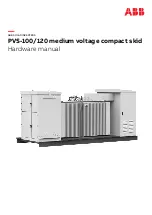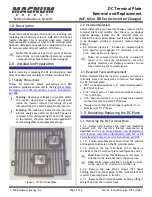
n
B/MUX. This is a special mode of recording that maps the full
24-bit data into multiple channels for use with recorders/systems
that only support 16-bit Adat resolution. For more information
see the Adat Formats section below;
n
S/MUX. This is the normal recording mode for 88,2 and 96 kHz
sample rates, providing the odd/even samples on alternate channels.
11 Calibrate. Use this button to initiate a calibration
cycle. During calibration the corresponding
LED will light. The unit automatically performs
a calibration cycle at power-on and every time the
CLOCK SOURCE or SAMPLE RATE are changed.
If the unit is set on external clock and not locked,
the CAL led will light continuously and the outputs
will be muted. A calibration cycle will automatically
be performed when the unit locks.
n
Lock LED. Indicates that the unit has locked to the external wordclock
input. It’s always turned off when internal clock operation is selected.
n
Power LED. Indicates that the unit is supplied with power and turned on.
12 Power switch. Turns the unit on and off. The front
panel settings are saved into non-volatile storage
when the power is turned off and subsequently
restored.
1 Earth terminal. Use this 4mm banana socket
to ground the chassis of the unit;
2 12 V AC jack. This is the power supply input.
Connect an approved power supply only;
3 Adat out Toslink optical connector. Keep it
plugged with a protective plug when not in use;
4 Wordclock out BNC connector. Use this output
if you need a master wordclock;
5 Wordclock in BNC connector. Supply here the
external wordclock;
6 AES/EBU output 1 XLR connector. Professional
format digital output of channels 1 and 2. See the
relevant section in the manual for interfacing with
coax units and/or Consumer format;
7 AES/EBU output 2 XLR connector. Professional
format digital output of channels 3 and 4.
8 Channel 1 input XLR. Fully ba4 dB analog
input. Pin 1 = chassis ground, pin 2 = positive, pin
3 = negative. Clipping level: +20 dBu. See below
for interfacing with unbalanced / –10dB formats.
9–11 Channel 2–4 inputs XLR.
Rear Panel
Layout
7
1
2
3
4
5
6
7
9
11
8
10
Summary of Contents for aD 96
Page 1: ...Users Manual...







































